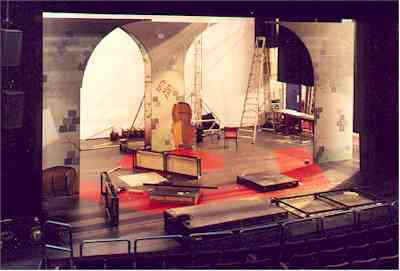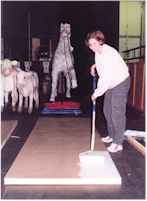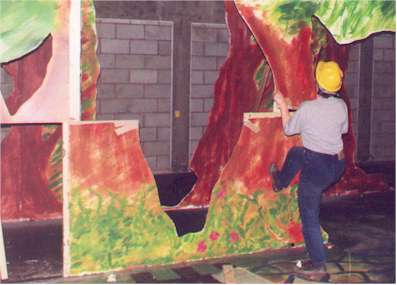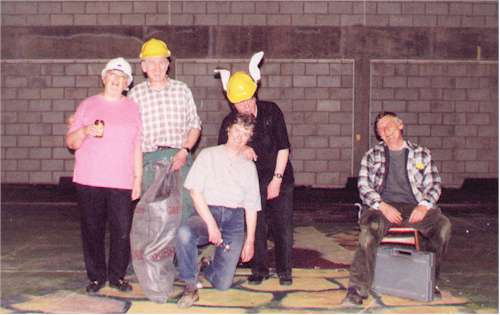Set Construction (and destruction)
 Once the Designer has completed the set design and agreed it with the director and
other relevant parties, the design has to be turned into a practical set.
Once the Designer has completed the set design and agreed it with the director and
other relevant parties, the design has to be turned into a practical set.
Sets range from the very simple with perhaps just a few flats or cloths to mark the acting area to very complex sets which have to be transformed several times during a performance.
The Crescent has a large workshop which is soundproofed enabling work to be carried out while another production is on the stage.
As far as possible, the set is constructed, perhaps in component form in the workshop, so that it is ready to be assembled on stage as soon as it becomes available.
 Set construction usually takes place in the evenings and Sundays. You don't need
to be a skilled woodworker or metalworker to help as there are always a range of tasks to
suit people with different skills.
Set construction usually takes place in the evenings and Sundays. You don't need
to be a skilled woodworker or metalworker to help as there are always a range of tasks to
suit people with different skills.
A basic knowledge of carpentry is useful but, in many cases set are built from various ready made flats which are simply clamped together on stage and the job of the scenic artist is to transform this (often literally) blank canvas into a representation of, for example, a wallpapered interior wall.
Painting the set often involves coving large areas with a single colour so no need to worry if you don't feel your artisitic skills are particularly high - speed of application with a paint roller is often just as important!
The Strike
At the end of a production the stage has to be cleared as quickly as possible to make way for the next show. This is the "strike" where all the hard work of the previous few weeks, building and painting the set, has to be undone in a couple of hours!
 The strike begins as soon as the audience have left after the last performance
and will continue until the stage is clear. There is always a strike on
the last night and, even if you do nothing else in the Crescent, your assistance in this
operation will always be appreciated.
The strike begins as soon as the audience have left after the last performance
and will continue until the stage is clear. There is always a strike on
the last night and, even if you do nothing else in the Crescent, your assistance in this
operation will always be appreciated.
Wear old clothes, strong shoes or boots and bring a pair of stout gloves if you have any - this will protect you from nails etc. Hard hats are available in the workshop.
A good strike leaving a completely bare stage ready for the next production can be a
very satisfying experience.
satisfying experience.
Contact the Stage Manager prior to the last night to find out what the strike arrangements are for a particular production.
